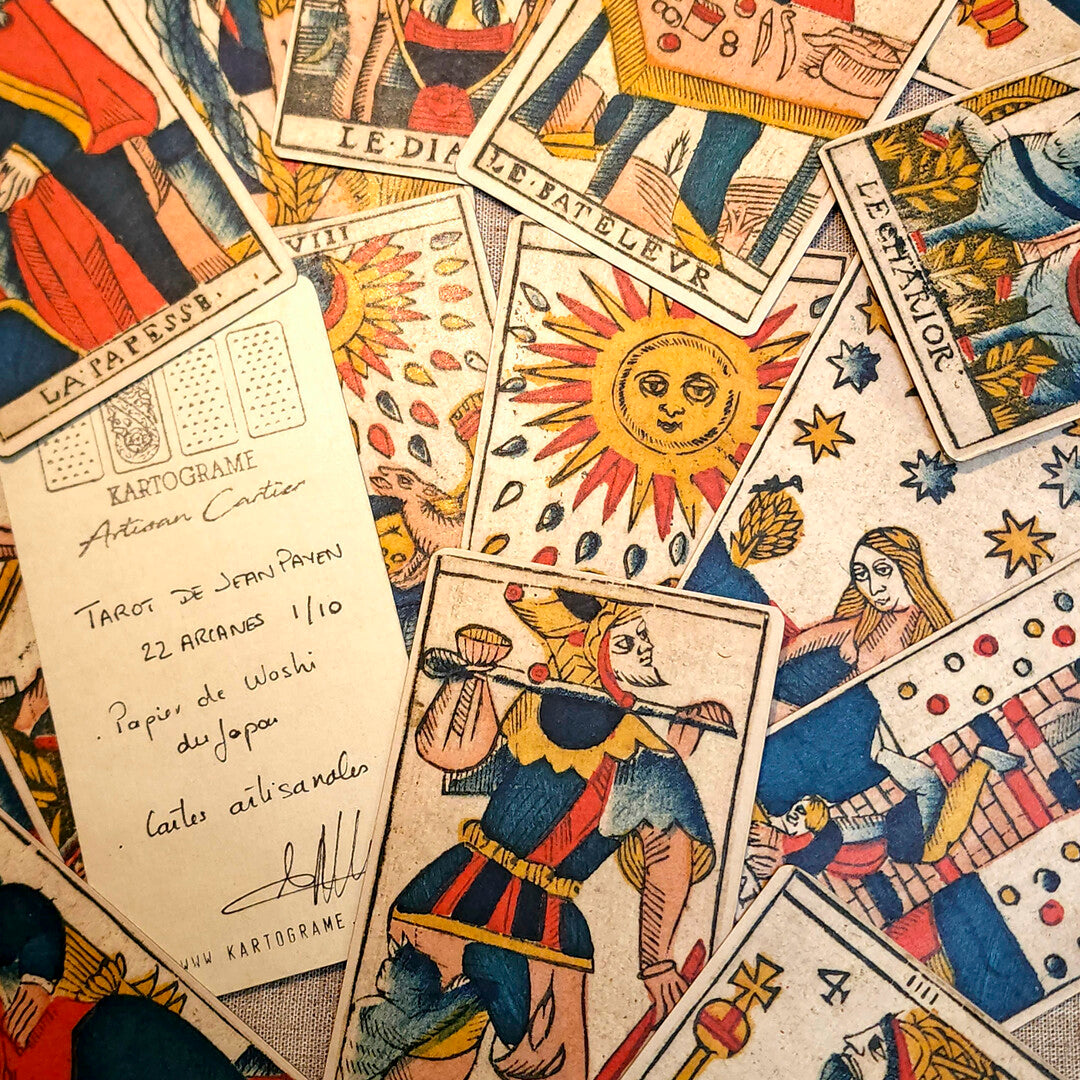
At the origin of the images of the Tarot de Marseille
Share
A look back at the history of art from the 10th to the 15th century
In the 10th and 11th centuries, the illumination of religious manuscripts developed. From the 13th century onwards, new works emerged, consisting of essays and translations of texts from the mythology of Ancient Greece. Thus a new thought is propagated: Man, his soul, his body, and his passions form a harmonious and inseparable "Whole" animated by a noble cause: Life.'
The classical (antique) vision is completely opposed to religious morality.
This depicts the separation of the impure body and the divine soul; their coexistence reducing Life to a permanent struggle between good and evil.
The two modes of thinking collide. From their meeting, a renewed artistic movement was born: it evolved the art of the manuscript, still rigid and moralizing, towards an iconography rich in passion for movement and space: the art of the Renaissance.
During this period: the subjects of woodcutting also evolved towards classical thought. This is when playing cards became popular in Europe. Often banned by law, the game support is a perfect opportunity for artists and engraving craftsmen to create a new motif. They subtly integrate humanist philosophy with the rigid iconography of the Middle Ages: they give birth to the Tarot! Its traditional graphics win the trust of religious people and monarchs while the images convey modern thought to all populations, even illiterate ones.
What a card trick!
Proposal on the dating of the iconography of the Dodal Tarot
The graphic style is reminiscent of illustrations from 11th century manuscripts through the shape of the clothing, the layout and the level of detail.
On the other hand, the tarot integrates classic elements (the chariot of Appolo, Cupid, etc.) and emotional expressions on the faces of the characters. This testifies that the author, even in a popular environment, was inspired by ancient thought.
On the other hand we observe these facts
the work Mythographus III was published in 1217: ancient mythology translated in its essence
"the triumphs" poem by Petrarch published in 1374: the example of an artist who appropriated the new current of thought
First mentions of playing cards 1377, in an edict mentioning their ban)
First tarot cards found in Italy: 1462 made to order for princely families open to humanist classicism.
It seems consistent that the style of Dodal's Tarot engraving dates from the late 15th or 16th century: a period of artistic transition.
In fact, art in the 17th century is already far from the iconography of the Tarot. Artists now devote themselves to observing and restoring nature, proportions and shapes with as much realism as possible. It is clear that all the tarot cards with the "Marseille" motif produced in the 17th and 18th centuries are copies of an earlier inspiration.
